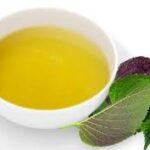Steamed Lotus Leaf Rice: A Culinary Treasure

Aromatic Appeal of Lotus Leaves
One of the defining features of steamed lotus leaf rice lies in the role of the lotus leaves. These leaves, not merely a wrapping but a flavor enhancer, impart an earthy aroma to the dish that is both delicate and unmistakable. As the rice steams, the natural oils from the lotus leaf infuse into the grains, elevating their flavor profile to something truly extraordinary.
Selecting the right lotus leaves is crucial. Dried lotus leaves, commonly available in Asian markets, need to be soaked in warm water until pliable. Their slightly herbal scent pairs harmoniously with the rich fillings inside. Fresh lotus leaves, if accessible, add a greener and more vibrant note, making them ideal for those who prefer a lighter taste.
Key Ingredients of Steamed Lotus Leaf Rice
Steamed lotus leaf rice is a versatile dish that allows for creativity and adaptation. However, some traditional components are essential to its authentic taste:
1. Rice
- Glutinous Rice (Sticky Rice): The foundation of the dish, glutinous rice provides a chewy texture that binds the flavors together. Soaking the rice for at least four hours before cooking is a vital step to achieve the perfect consistency.
- Alternative: Regular jasmine rice can be used for a lighter, fluffier texture, though it alters the traditional chewy quality.
2. Protein Fillings
- Chicken: Marinated with soy sauce, oyster sauce, and sesame oil for savory depth.
- Chinese Sausage (Lap Cheong): Adds a sweet and smoky flavor.
- Pork Belly: Often included for its richness and ability to absorb the marinade beautifully.
- Seafood: Shrimp and scallops bring a briny sweetness that complements the other ingredients.
3. Vegetables and Add-ins
- Mushrooms: Shiitake mushrooms, soaked and sliced, add an umami richness.
- Chestnuts: Provide a sweet, nutty contrast to the savory elements.
- Dried Shrimp: Small yet powerful in flavor, they intensify the overall taste.
- Scallions and Ginger: Essential aromatics that enhance the dish’s complexity.
4. Seasonings
- Soy sauce, dark soy sauce, oyster sauce, and five-spice powder create a balanced and flavorful marinade for the ingredients.
Preparation Techniques
Preparing steamed lotus leaf rice requires attention to detail and careful layering of flavors.
1. Prepping the Rice
- Rinse the glutinous rice thoroughly to remove excess starch.
- Soak the rice for four to six hours, then drain.
- Pre-steam the rice for 20 minutes, adding a touch of salt or soy sauce to infuse flavor.
2. Preparing the Fillings
- Marinate the proteins: Combine soy sauce, dark soy sauce, oyster sauce, sesame oil, sugar, and five-spice powder in a bowl. Marinate the chicken, pork, or seafood for at least 30 minutes.
- Sauté the aromatics: Heat oil in a wok and stir-fry garlic, ginger, and scallions until fragrant.
- Cook the fillings: Add the marinated proteins, mushrooms, and chestnuts to the wok, cooking until just done.
3. Assembling the Lotus Leaf Wraps
- Place a lotus leaf on a clean surface, shiny side up.
- Spread a layer of pre-steamed glutinous rice in the center.
- Add a generous portion of the cooked fillings on top of the rice.
- Cover the fillings with another layer of rice.
- Fold the lotus leaf over the mixture to create a neat parcel. Secure with kitchen twine if necessary.
4. Steaming the Parcels
- Arrange the parcels in a bamboo steamer or a large steamer basket.
- Steam over boiling water for 30–40 minutes, allowing the lotus leaf to infuse its aroma into the rice.
Presentation and Serving
Steamed lotus leaf rice is traditionally served as a whole parcel, allowing diners to unwrap their own and savor the aromatic release of steam. The dish pairs wonderfully with light soups, pickled vegetables, or stir-fried greens, offering a balanced and complete meal.
For a more elegant presentation, you can cut the parcels into halves or quarters, showcasing the vibrant layers of rice and fillings within. A sprinkle of freshly chopped scallions or cilantro adds a fresh finish.
Cultural Significance
Steamed lotus leaf rice is a dish deeply rooted in Chinese tradition, often associated with celebrations and festive occasions. Its use of lotus leaves symbolizes purity and harmony, making it a popular choice during weddings, banquets, and Lunar New Year feasts.
In dim sum culture, this dish, known as “Lo Mai Gai,” is a staple. Smaller portions are typically served in individual parcels, offering diners a compact and flavorful taste of this culinary gem.
Modern Variations and Innovations
While the classic recipe remains beloved, modern adaptations of steamed lotus leaf rice have emerged to suit diverse palates:
- Vegetarian Version: Replace proteins with tofu, jackfruit, or additional mushrooms.
- Fusion Flavors: Incorporate spices like turmeric, curry powder, or chili paste for a twist.
- Healthier Options: Use quinoa or mixed grains in place of glutinous rice.
- Seafood Exclusive: Focus entirely on shrimp, scallops, and fish for a coastal-inspired variation.
Tips for Perfecting the Dish
- Quality Ingredients: Fresh, high-quality lotus leaves and glutinous rice are key to achieving authentic flavor.
- Balanced Marinade: Ensure the marinade complements but does not overpower the natural taste of the fillings.
- Layering: Distribute the rice and fillings evenly to ensure a harmonious bite every time.
- Steaming Time: Be cautious not to over-steam, as it can result in soggy rice.
Pairing Suggestions
Steamed lotus leaf rice pairs beautifully with:
- Chinese Herbal Soup: A light, clear broth balances the richness of the dish.
- Stir-Fried Greens: Bok choy or gai lan add a refreshing crunch.
- Tea: A cup of jasmine or oolong tea cleanses the palate between bites.
Conclusion
Steamed lotus leaf rice is more than just a dish; it’s an experience that combines aroma, flavor, and tradition. Whether enjoyed as part of a dim sum spread or a standalone meal, its timeless appeal continues to captivate food lovers worldwide. With its versatile ingredients and adaptability, it’s no wonder this culinary treasure has stood the test of time.


